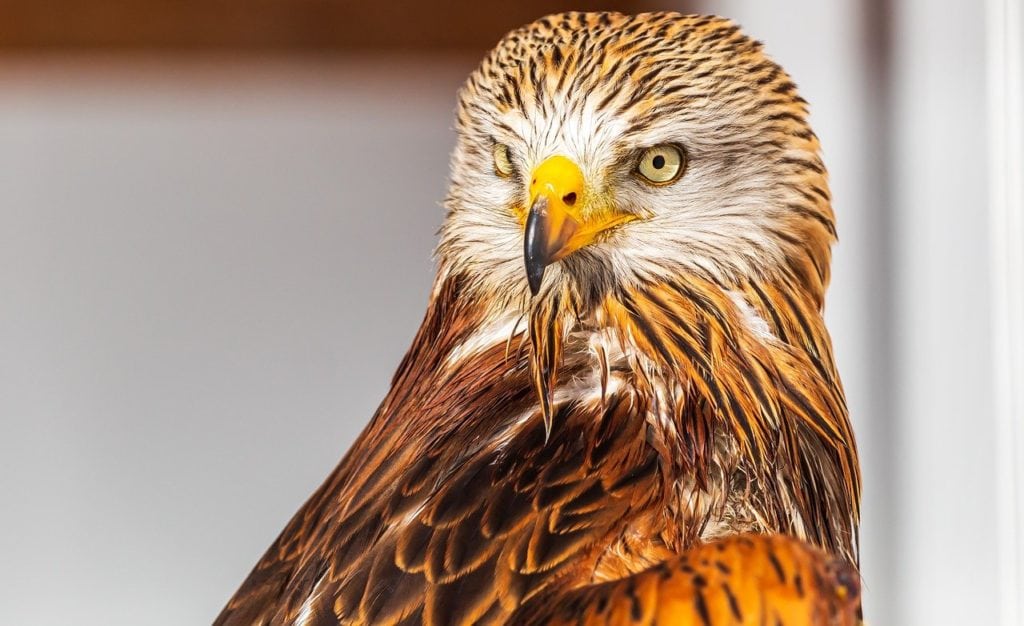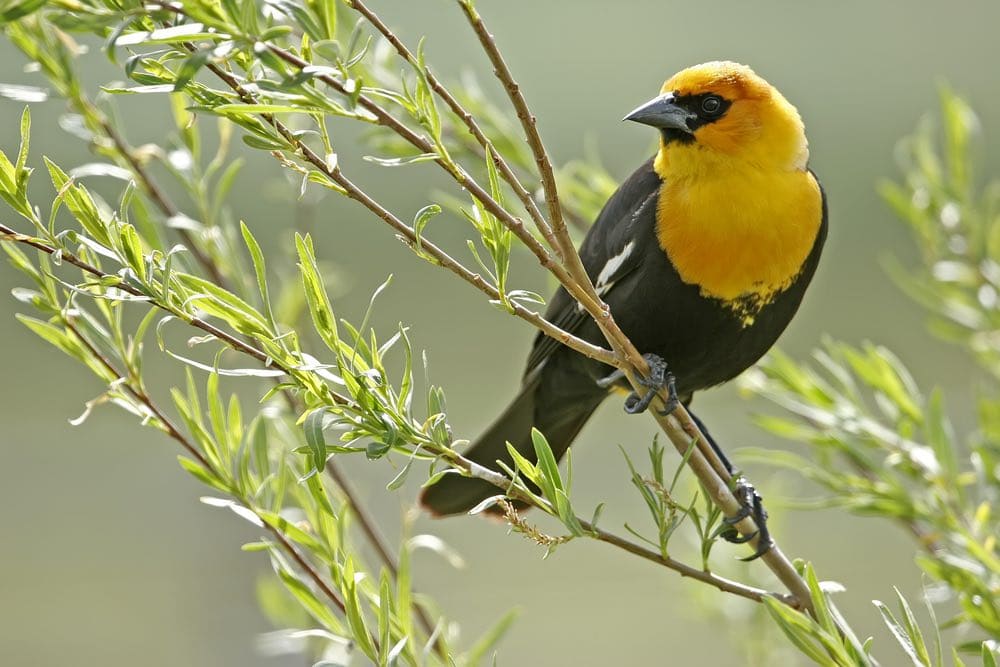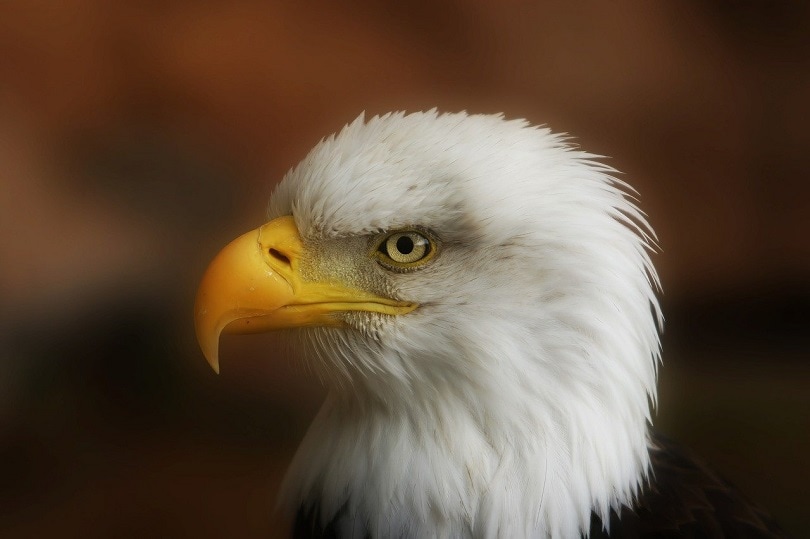Do Birds Have Teeth? How Do Birds Eat?
Last Updated on

Birds are endlessly fascinating! You might have noticed that some birds look like they have serrations on their beaks, so you may wonder if they have teeth.
The short answer is no, birds do not have teeth — but they used to! We look at how birds eat without teeth and how they evolved from having teeth to what we see today.

Why No Teeth?
First of all, while birds don’t have teeth, they do develop a tiny little tooth-like appendage (which is made up of calcium) at the tip of their beaks while inside the egg. They use this tooth to break out of their eggs, and it typically falls off a couple of days after hatching, or in the case of passerines, such as sparrows, the egg tooth is absorbed into their beaks.
According to research, the ancestors of modern birds did have teeth, but they lost their teeth about 116 million years ago and started to develop beaks around the same time. In 2018, scientists revealed the fossil of one of the first bird beaks, which is described as “transitional.” It belongs to the Ichthyornis dispar, and it has a recognizable beak that is lined with teeth.
No one seems to know why birds lost their teeth in place of beaks, but it turned out to work in their favor. Birds without teeth survived the mass extinction of the dinosaurs, and it is believed to be because they were seed eaters. The toothed version of birds went extinct, but some of the birds that had beaks instead of teeth lived on.

Let’s Talk About Beaks
One of the most characteristic features of all birds is their beak. Other creatures out there might have something like a beak (like octopuses), but with all the bird species out there, you can find a huge variety of beaks.
Beaks are used for any manner of functions, everything from eating, grooming, and feeding their young to mating and building nests.
Beaks are typically made up of the protein keratin, which is the same material as our fingernails and horses’ hooves.
There are many different kinds of beaks, and the shape is determined by the diet of the bird.
How Birds Eat
It is thought that birds lost their teeth because they didn’t need them. Most birds eat insects and seeds, and teeth would just get in the way. For birds that do hunt down prey, they have powerful talons and beaks that help them eat.
A bird’s gizzard does all their chewing for them. Gizzards are exceedingly strong muscular organs found in birds’ stomachs. Birds can swallow food whole, and their gizzards grind it up so it can be digested.
Certain species of duck, such as the scaup, will swallow mussels and clams whole, and their gizzards can grind them up, shell and all. Who needs teeth when you have something as efficient as a gizzard?

Birds With Teeth
There are a few birds that technically do have teeth. There’s the double-toothed kite, which is a raptor with two tooth-like attachments on the sides of their upper beaks. There’s also the double-toothed barbet, which also has two tooth-like notches on the sides of its beak.
There are also geese. Like the raptors, they have sharp little protrusions that line their beaks and their tongues. These help the geese grab grass and tear it up before eating it, along with small rodents and insects.
These “teeth” are used to bite into their prey to hold onto it — they’re not for chewing. These are called tomial teeth, which essentially act like shears and help cut through their prey. These are not teeth, though, because they are not covered in enamel and are the same material as the beak, so they are basically an extension of the beak itself.
More About Beaks

A bird’s beak is an evolutionary tool that has adapted to the bird’s specific diet and other functions.
Cone-Shaped
These beaks belong to granivorous birds that feed primarily on seeds, such as goldfinches, canaries, and sparrows. The beaks are hard and short and enable these birds to break open seeds.
Hooked
Hooked beaks tend to go with predatory birds, particularly raptor birds, like hawks and eagles. The hooked beak is adept at tearing flesh, which works well for meat-eating birds.
Long and Needle-Like
These beaks belong to birds that feed on the nectar of flowers, such as the hummingbird. The needle-like beak is inserted into the flowers, and they use their long tongues to sip the nectar. The length of the beak depends on the shape of the flowers that they feed from.
Short and Curved
Belonging to the macaws and parrots, these beaks are quite strong and are used for eating fruit and seeds. They can also act almost like an extra appendage to help them climb.
Spatulate
These beaks tend to look like little spatulas. They belong to wading birds, such as the spoonbill and certain storks, and are long with a flattened, horizontal end. They are used for scooping up small mammals and mollusks in marshes and ponds without the bird getting its head wet.

Straight and Thin
These beaks belong to birds that eat primarily insects, such as the robin and the bee-eater. These birds go after insects that are not in motion, or they will use their beaks to find insects under bark, like the woodpecker.
However, for birds that eat insects while in flight (like swallows), the beaks tend to be short, flat, and wide.
Wide and Flat
Flamingoes use their wide, flat, and angled beaks to filter their food from the water. Swans and ducks are also in this category.
Large With Curved Tip
Fishing birds that catch their food by diving into the water have these kinds of beaks, like albatross and seagulls. Many of these beaks sometimes have a serrated edge to stop the fish from slipping.
You’ll also find the pelican in this category, but they have the unique addition of a large pouch under the beak, where they store their fish like mini aquariums.
There are several other unique beaks that don’t necessarily fit under one category, such as those of the toucan or the shoebill. But this all clearly demonstrates how essential beaks are for birds and how much their diet determines what kind of beak they have.


In Conclusion
Each species has a unique diet and their beaks help them eat. While birds don’t have teeth, they’ve adapted beautifully to eat without any. Their beaks do so much for them already. Can you imagine building things, grooming yourself, or regulating your body temperature with your teeth?
While we may never fully understand why birds had teeth millions of years ago and then lost them, it looks like that was a good thing. It’s possible that we might not have all these amazing birds today if they had kept those teeth!
Featured Image Credit: Pixabay
About the Author Kathryn Copeland
Kathryn was a librarian in a previous lifetime and is currently a writer about all things birds. When she was a child, thanks to her love of animals she hoped to work in zoos or with wildlife in some way. She's not strong in the sciences, unfortunately, so she uses her time to research and write about all kinds of birds and animals, and hopes to bring that detailed knowledge to OpticsMag.
Related Articles:
How to Clean a Refractor Telescope: Step-by-Step Guide
How to Clean a Telescope Eyepiece: Step-by-Step Guide
How to Clean a Rifle Scope: 8 Expert Tips
Monocular vs Telescope: Differences Explained (With Pictures)
What Is a Monocular Used For? 8 Common Functions
How to Clean a Telescope Mirror: 8 Expert Tips
Brightfield vs Phase Contrast Microscopy: The Differences Explained
SkyCamHD Drone Review: Pros, Cons, FAQ, & Verdict
